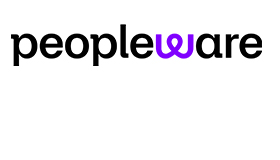Chris Dealy at injixo continues to look at the gig economy, call centres, and WFM.
In part 1 of our gig contact centre series, we explored the pros and cons of the gig economy from the perspective of the gig worker and the call centre.
In part 2, we’re going to look at how workforce management (WFM) optimizes gig customer service for the benefit of the customer, the agents, and the business’s bottom line.
How to Plan for Gig Agents
Let’s explore some of the unique considerations that apply when planning a gig economy workforce.
Forecasting
The forecasting process is the same regardless of whether your staff are permanent, gig workers, or a mixture. But because the availability of gig workers is unpredictable, you will have a clear advantage if your forecast is accurate and constantly up-to-date.
Today’s automated, AI-based forecasting tools are a boon when your workforce includes gig agents. You need to be able to adapt your scheduled activities based on changing contact volumes and AHT, as well as the availability of permanent agents and gig agents.
Scheduling
Gig customer service workers can’t be scheduled like permanent employees. Gig workers expect to be in control of the hours that they work.
That’s why self-scheduling is a perfect solution for gig workers: it’s all about letting agents choose their own shifts. Shift bidding is a proven way of enabling self-scheduling.
Shift Bidding
This enables you to align customer demand with the supply of agents, while letting agents choose their working times. Shift bidding breaks the process of optimized scheduling into five steps:
- Create shifts that are based on demand but are not yet assigned to agents. Gig workers will typically expect short shifts without breaks, with a wide range of possible start times.
- Give agents the opportunity to select from the offered shifts. Clearly, a WFM application with a smartphone agent portal is perfect for this.
- Allocate agents to shifts, respecting their bids as far as possible.
- Assign the remaining shifts to agents to optimize coverage, while respecting the constraints.
- Publish the shifts to agents. Again, a smartphone portal is ideal for this purpose.
The devil is in the detail when it comes to gig economy workforce management. If a gig agent wants to work full-time hours, they will probably have to pick some shifts at unsocial times.
If your centre is open outside office hours, you should start filling gaps with permanent employees based on their preferences and then bring in the gig workers.
You may struggle to get sufficient gig agents at peak times – which is one of the main advantages of using gig workers.
You can avoid this by making peak time or out-of-hours shifts more financially attractive to gig agents. Or you could require that gig agents pick at least some peak shifts before selecting their perfect gig times.
Availability
An alternative to letting gig agents bid for shifts is to allow them to declare their windows of availability for a period into the future.
This is a feature of most good WFM applications and is typically available via the smartphone interface to all agents, both permanent and gig workers.
Agents are asked for their availability on the understanding that they will work any shifts which are generated within the stated windows. This method of course requires gig agents to plan ahead, which is somewhat counter to the gig ethos.
Scheduling Constraints
There are always constraints that have to be observed when generating schedules. For example, you need to schedule agents on activities for which they have the required skills.
For permanent employees, you also have to respect contracts of employment and labor regulations, e.g. minimum time off between shifts and maximum working hours.
Those constraints don’t necessarily apply to gig scheduling, but according to SWPP, you do, however, need to take some considerations into account when scheduling in a gig contact centre.
Minimum Length of Shift
It inevitably takes a few minutes to log in at the start of a shift. And cutting customer contacts short or failing to complete wrap-up work in order to finish on time is not acceptable.
As SWPP puts it, “if your average contact handling time is 14 minutes, you won’t want to allow employees to end up with a work session that is only 10 minutes long”.
That’s an extreme example, but you do need to set a realistic lower limit on the length of shifts that you offer to gig agents.
Maximum Length of Shift
In some countries, working time regulations don’t apply to the self-employed, so in theory, there is no problem having gig agents working long shifts.
You should of course have a clear understanding of the legislation that applies to your centre. Even if it is legal to have gig agents working long shifts, it may not be desirable.
Call centre work can be stressful at times. It’s a fact of life that some calls will be neither friendly nor straightforward.
And there will always be significant queues at peak times. Long shifts can damage the customer experience and be detrimental to the well-being of the agent.
Gaps in Shifts
How much time off should you allow between shifts when gig scheduling? Logging out, logging in again, and getting back in the zone to interact with customers inevitably damages productivity. It’s best to avoid a series of short shifts separated by gaps.
Real-Time Management
Unexpectedly high contact volume or unplanned staff absences can lead to your service goals not being achieved. Real-time management is the process of monitoring how actual performance on the day compares with planned performance, then taking swift corrective action.
This normally takes the form of requesting backup staff from other departments, temporarily suspending cross-selling or upselling to reduce AHT, rescheduling training and other controllable shrinkage, and offering overtime.
Gig agents provide an excellent way to fill staffing gaps and you should expect gig workers to be able to log in at very short notice. You can’t always depend on that, however, so the sooner you’re aware of deviations from plan, the better.
You need to be at the top of your real-time management if you want to use gig agents as part of your real-time management ‘plan to react’. You also need to have powerful real-time management tools at your fingertips.
Schedule adherence is always important but it needs to be handled differently for gig agents. If a permanent employee logs in late or logs out early, you may ask them to make up the lost time.
If this happens repeatedly, you should pick this up in the adherence report and discuss it during the 1:1 meeting.
You’re paying gig agents for the exact amount of time that they work, so if they don’t adhere to their schedule, that needs to be reflected in the payment they receive.
Analysis
Contact centre agents, either permanent employees or gig workers, represent the single largest cost in every contact centre.
They are also the single most important contributor to the customer experience. Customer KPIs such as First-contact resolution (FCR), Customer satisfaction (CSAT), Net promoter score (NPS), Customer effort score (CES), and customer churn rate are massively influenced by how well the agents interact with customers.
Gig workers are by definition less of a ‘known quantity’ than permanent employees. Consequently, it’s vital to track and measure the performance of gig agents.
By doing that, you’ll know the gig agents with whom you do want to build a long-term partnership – and those you don’t.
Conclusion
The gig economy is here to stay, and it is a part of the labor market that contact centres cannot and should not ignore.
Already, there are contact centres for which the gig customer service represents a competitive advantage. Contact centre business process outsourcer (BPO) LiveOps recruits agents with the value proposition ‘We help you work around your life. Whether it be the wee hours of the morning or after the kids are in bed, we’ve got opportunities’. LiveOps allows agents to work anything from 30 minutes per week to 60 hours per week, and to choose when they wish to work.
And they are flourishing. Is it time to consider tapping into the gig economy workforce in your contact centre?
This blog post has been re-published by kind permission of Peopleware – View the Original Article
For more information about Peopleware - visit the Peopleware Website
Call Centre Helper is not responsible for the content of these guest blog posts. The opinions expressed in this article are those of the author, and do not necessarily reflect those of Call Centre Helper.
Author: Peopleware
Published On: 24th Apr 2023 - Last modified: 17th Jun 2024
Read more about - Guest Blogs, Chris Dealy, Peopleware






 Peopleware is a leading workforce management (WFM) solution, trusted by over 500,000 users in 30+ countries. With smart forecasting, automated scheduling and real-time management, organizations can optimize workforce efficiency and keep work aligned with demand. From precise time tracking to flexible planning, Peopleware helps organizations boost operational efficiency and foster a more engaged, productive workforce.
Peopleware is a leading workforce management (WFM) solution, trusted by over 500,000 users in 30+ countries. With smart forecasting, automated scheduling and real-time management, organizations can optimize workforce efficiency and keep work aligned with demand. From precise time tracking to flexible planning, Peopleware helps organizations boost operational efficiency and foster a more engaged, productive workforce. 









